Better Sailing


Sailboat Maintenance Checklist
Whether your sailboat is stationary for a long time, or whether you live and travel with it, there are several key things to keep an eye on. Regular maintenance of your sailboat will ensure more years of use and better performance. Furthermore, your sailboat will be safer and it will keep its value longer. Below you’ll find a checklist for routine mission-critical checks. Some of these checks have to be performed both daily and monthly. Others require monthly and annual checks, but always make sure to inspect everything, thoroughly. Follow the steps of the list and ensure trouble-free sailing.
The engine of your sailboat is something that requires a lot of care and attention. Inspect regularly the condition of the engine and look for corrosion, as well as make sure that the outboard motor is securely in place. Daily maintenance of the engine consists of:
- Check the engine’s oil level.
- Check the belt tension.
- Transmission fluid level.
- Inspect pulleys as well as the alignment.
- Alternator and water pump belts have to be tight.
And now we’re moving on to the monthly maintenance of the engine which includes:
- Change the oil and filter of the engine.
- Clean the thru-hull.
- Clean the siphon break.
- Fill up coolant and antifreeze if needed.
- Check pump, impeller, and raw water strainer.
Finally, let’s see the annual maintenance of your sailboat’s engine:
- Test the batteries.
- Check the diesel tank for damages.
- Inspect the shaft and propeller.
- Change primary and secondary fuel filters.
- Bleed the fuel system.
Check the Bilge and Bilge Pump
The bilge is situated at the bottom part of the sailboat and collects excess water. The bilge pump is the piece that removes water from the bilge. If the bilge pump is damaged, your sailboat can even be sunk! In order to keep yourself and your boat safe, check the pump hoses for debris that could cause clogs. In case you find a leak, the first thing you should do is to taste the water. Is it freshwater or saltwater? So, every few days survey the bilge for oil, water, or fuel leaks. Moreover, it’s important to lift a central floorboard often just to ensure that the bilge is dry. Leaks can be caused by different areas. For instance, leaks that come from holes in the deck, loose hatch seals, or improperly sealed windows.

>>Also Read: Common Sailboat Problems and How to Fix Them
Always inspect probable damages to your sailboat, even if it’s in a well-maintained condition. It’s recommended to make monthly and yearly checks to make sure it stays in perfect condition. Firstly, inspect the hull, keel, and rudder and look for any damages, cracks, and blisters. Then, make sure that the drain plugs are in place. Apply gel coat restorer or a rust inhibitor to the scratches or to the rusting of your sailboat’s bodywork. Moreover, you will also need to remove your sailboat from the water, once a year. It’s easier to do this during the winter months and although this can be a costly thing to do, is really worth it. Like this, you’ll get a better image of the hull’s condition and fix anything that needs repair. Finally, remember to annually carry out anti-fouling and any re-painting or zinc replacement.
Raw Water Strainers and Freshwater Levels
Don’t forget to check your seas strainers! If you’re running your generator, heat/air conditioning, or anything that requires saltwater or raw cooling system to function, you might want to surveil your strainers. Furthermore, inspect the water flow on all of the raw water cooling systems. You have to see an easy flow of heating, Genset, refrigeration, and aircon cooling water out of the system. If the freshwater system, which is pressurized by an accumulator tank gets too low, then it throws the whole system out and thus it will not be working properly. So, it’s imperative that you never let your water tanks empty.
As for the electrical system it is recommended to check it every month. Check the condition of the wires, if they’re neatly secured, dry, and inspect their casings to see if they are intact. However, there are some sailboats that have their generator running periodically to charge them up. So, keep an eye on your battery’s charge levels. Also, the electrical lines must be in good condition to keep the electrical system on your sailboat up and running. Any damaged lines could provoke a fire hazard. To prevent electrical lines from erosion, remember to keep them clean, and use a digital multimeter to make sure everything’s working properly.
Without the battery, which is the heart of your sailboat, the engine won’t start, nor the electrical components will work. So, take good care of the battery and check it once a year, or more often, i.e. during the boating season. Keep in mind that batteries naturally degrade over time, so this is a must task to perform. You can check the battery’s charge with a digital multimeter, and the connections for corrosion. Moreover, test the batteries and check if they’re clean and dry. There are sailboats that have solar and wind power that continuously tops up the batteries. Other sailboats depend on having the generator running periodically in order to charge them up.
In case you’re running the generator you will need to check its vitals at least once a week. So, check the oil, belt, water level, and inspect for leaks and loose connections. You can see the leaks easier if you keep the Genset clean.
Oil and Filter
Remember to regularly change the oil and oil filter. In case you don’t, then it is possible to provoke damage to the engine parts. In order to change the oil, let the engine run for about seven minutes, then turn it off. Subsequently, place a container under the drain plug. Take out the drain plug and loosen the screw that is located above. Then, let the oil drain out for about 30 minutes. During this process change also the oil filter. After the oil drains out, replace the drain plug and tighten the screw. Finally, fill the engine with the proper oil.
Fridge and Freezer Temperature
The effectiveness of a fridge often depends on the temperature of the sea. Many boat refrigeration systems get a charge over time which makes them less effective. Therefore they slowly reduce the temperature gauge. So, it is recommended to change the temperature gauge at least once a week. The temperature of the fridge has to be below 5 degrees and the freezer below freezing.
Sails and Rigging
Sails and rigging have to be checked at least once a month. Firstly, look out for any chaffing where the headsail sheets attach to the clew, and also to the traveller and boom vang. Secondly, examine thoroughly if there’s any wear on the mainsail. Then, check if the cotter pins and shroud are in place and in good condition. Finally, make sure that the turnbuckles and pelican hooks on the lifeline are in good condition.
Summary- Maintenance List
Your sailboat’s maintenance needs to be taken seriously. When you’re regularly maintaining your sailboat, you also ensure its life spanning. Some basic items that require constant maintenance are the generator, the battery, the plumbing, the bilge, oil, and the fridge and fluid levels, among others. However, there are others that require monthly or yearly maintenance, such as the engine, the electrical system, the sails and rigging, the propeller, zippers, hinges, upholstery, etc. In case you can’t repair or check the condition of these parts, then consider contacting a professional to help you with the maintenance process.
Peter is the editor of Better Sailing. He has sailed for countless hours and has maintained his own boats and sailboats for years. After years of trial and error, he decided to start this website to share the knowledge.
Related Posts

Atlantic vs Pacific: Which is More Dangerous for Sailing?

Why Do Sailboats Lean?

How Does a Boat Sail Upwind? Unveiling the Mechanics of Against the Wind Sailing

How Does Sailing Work? The Physics of Sailing
- Buyer's Guide
- Destinations
- Maintenance
- Sailing Info
Hit enter to search or ESC to close.

- Boat Accessories
- Where to Buy

Special until May 31st: 35% off Teak Deck Sealant for the month of May. Use Code MAY24 at checkout. *restrictions apply
Free ground shipping in the Continental US for any orders over $150!
The Ultimate Sailboat Maintenance Checklist...
The ultimate sailboat maintenance checklist.

Pop quiz: when are you finished with maintenance on your sailboat? It’s a trick question. The real answer is “never,” because a sailboat needs regular care and attention if it’s going to perform at its best. And that care and attention won’t help if it isn’t comprehensive. That’s why we’ve put together this ultimate sailboat maintenance checklist to help keep your ship in top condition:
- Inspect the boat. Survey the bilge, for example. Test the bilge pump and make sure it runs smoothly. Visually inspect the hull. Look for leaks. Check the raw water sea strainers and look at your battery levels on a regular basis. The key word here is “comprehensive.” Remember, without a comprehensive inspection, you won’t know which issues need addressing.
- Inspect your anchorage. Keeping an anchor in proper condition is essential. You don’t want to head out on a journey and find out that your anchor is suddenly flawed. Some experts recommend waiting for clear waters and weather and diving down to check the anchor itself.
- When in doubt, get a second opinion. If you’re not sure about the quality of a particular system, you should bring in an extra pair of eyes—preferably an expert’s pair of eyes. It’s better to know that your sailboat doesn’t have a problem than to wonder.
- Write down your regular maintenance habits. Add a date next to your notes so you know what needs to be done first. You’d be amazed at how much time can pass since you inspect a critical system if you don’t track it. By tracking it, you’ll know which spots on your sailboat deserve the most attention next time around.
- Look at the quality of your sailboat’s wood. A sailboat’s wood is comparable to its lifeblood. You don’t want dry rot to set in and completely change its quality. We recommend a range of Wood Restorers that can help you out here if a total replacement is not needed. Our Git-Rot Kit is particularly helpful. It uses capillary action to penetrate through wood rot and strengthen the wood to make it both sandable and paintable.
- Keep it clean! If there’s one thing inexperienced boat owners often forget, it’s that keeping a clean boat can work wonders. Keeping your sailboat clean will help prevent mildew from developing, which in turn ensures that you don’t end up with a lot of strange odors that become hard to eradicate. We have a full range of Boat Cleaning Products here at BoatLIFE for you to peruse.
- Address maintenance issues as soon as they arise. Don’t put a new issue, such as a strange noise, on the back-burner. You don’t want to find out about a new problem when you’re out on the water. You want to know everything there is to know when you’re safe at home.
Stock Up On Boat Maintenance Products
There is a lot you can do to maintain a high-quality, sea-worthy sailboat—and you’ve read a lot of it here. Make sure to expand your boat maintenance toolkit with our boating products here at BoatLIFE.

Share this:
- Click to share on Twitter (Opens in new window)
- Click to share on Facebook (Opens in new window)
Featured Products
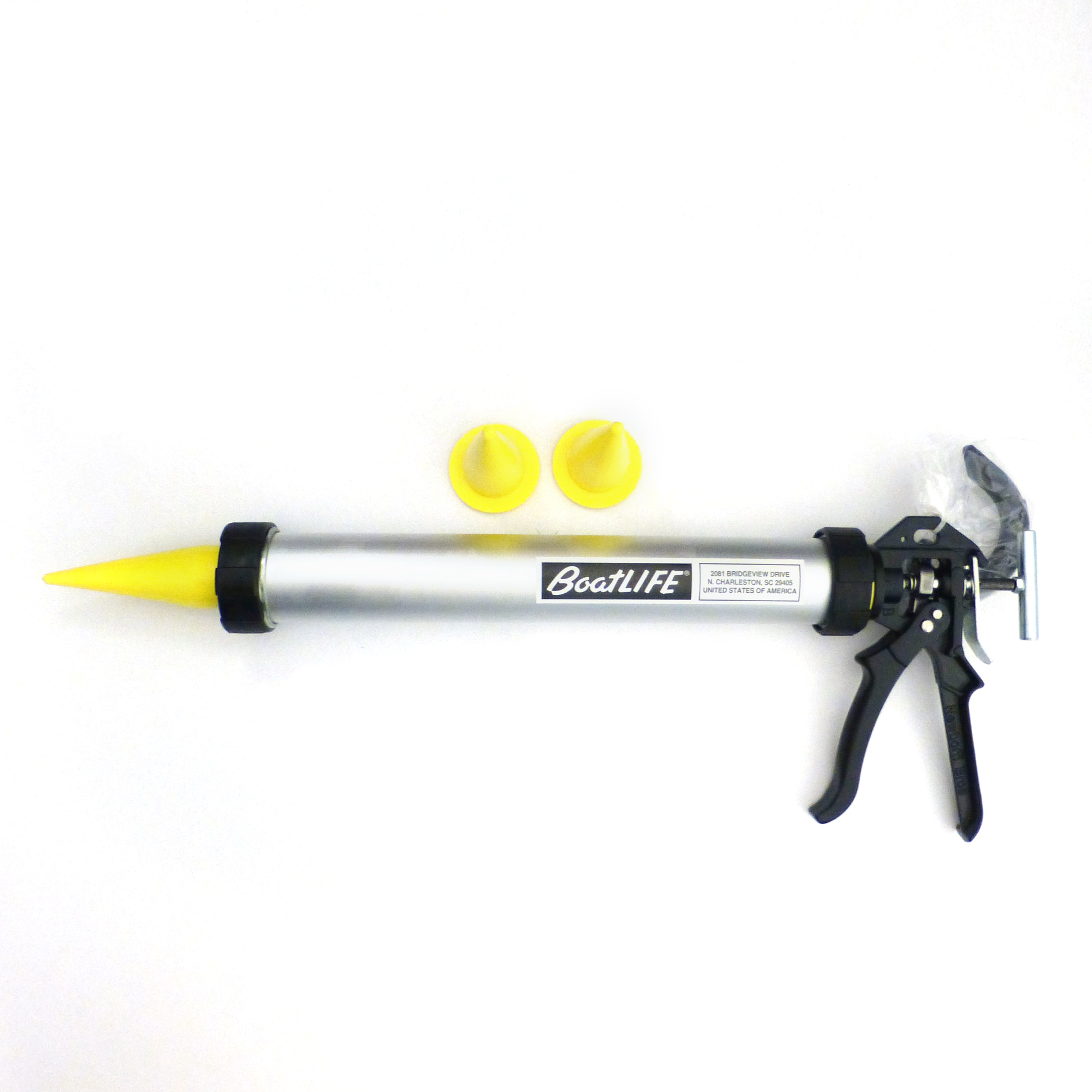
Liquid LifeSeal® Sealant 5.2 fl. oz. Clear

Stainless Steel Cleaner 16 fl. oz.
Related blogs, thanksgiving trivia.
Thanksgiving is one of America’s oldest and most loved holidays. Even though the story is steeped in a dark history […]
Detailing Your Boat
There’s nothing better than hitting the water in a beautiful boat. A warm summer day with the sun shining, there’s […]
How To Properly Clean Your Boat Trailer
We all know that cleaning your boat is important to not only keep it looking great, but to also ensure […]
All products proudly made in the usa

- 2024 BOAT BUYERS GUIDE
- Email Newsletters
- Boat of the Year
- 2024 Freshwater Boat and Gear Buyers Guide
- 2024 Boat Buyers Guide
- 2024 Water Sports Boat Buyers Guide
- 2024 Pontoon Boat Buyers Guide
- Cruising Boats
- Pontoon Boats
- Fishing Boats
- Personal Watercraft
- Water Sports
- Boat Walkthroughs
- What To Look For
- Watersports Favorites Spring 2022
- Boating Lab
- Boating Safety

Reasons to Keep a Boat Maintenance Log
- By Rich Johnson
- Updated: August 10, 2021
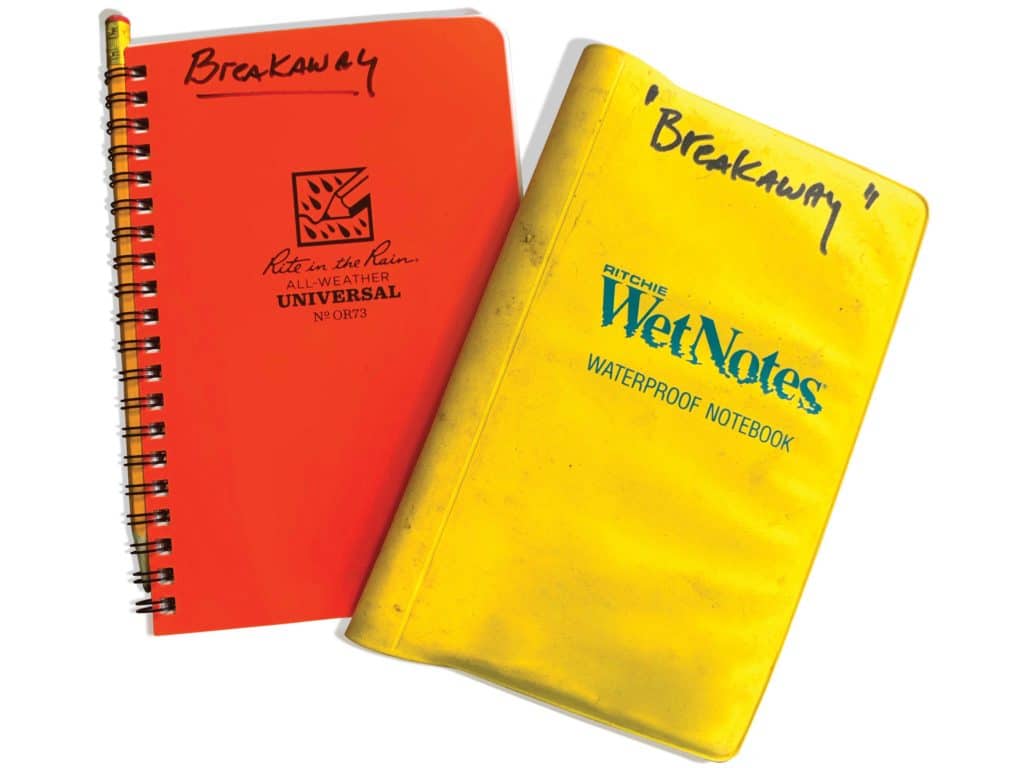
Death and taxes—the only things you can really count on, or so they say. Of course, if you own a boat, there will be the eventual sale of that boat, which is kind of like death.
Hey, cheer up. Maybe the sale of your boat is so you can buy a different one—bigger, faster, prettier and better equipped. Regardless, it is true that at some point all of us will face the prospect of selling a boat.
No matter how you feel about selling your boat, the process will go easier if you have kept a detailed maintenance log extending all the way back to when you bought it. The reason this will ease the process is because the prospective buyer will feel much happier and more confident about the condition of your boat if he or she can see that diligent attention has been paid to maintenance.
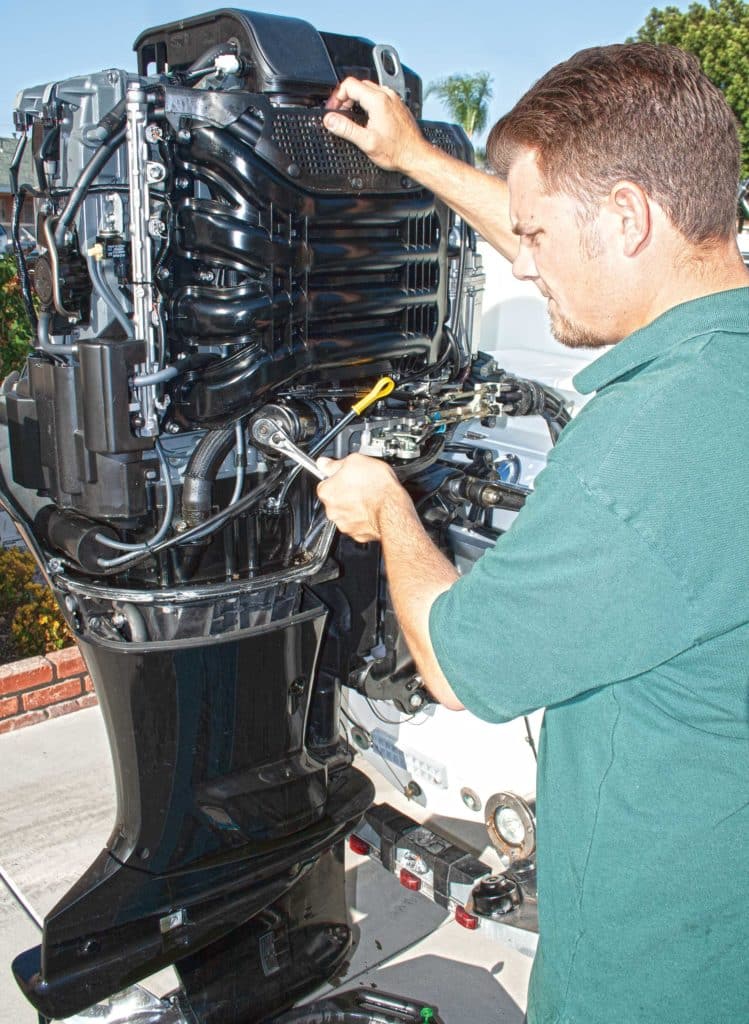
Along that same line, when you buy a used boat, you will want to be able to check over the maintenance log to make sure everything has been done to keep the vessel in satisfactory working order. So, a good maintenance log is a big deal, whether you’re selling or buying a boat.
As an owner, a maintenance log is a great aid in caring for your boat. Noting the dates of regularly scheduled maintenance items, such as filter changes, and oil and other fluid changes, makes it easier to care for your boat, its engines and its systems. Additionally, unscheduled maintenance, such as battery swaps, sacrificial-anode replacements, steering-cable replacement, topping off hydraulic fluid, etc., will help you and prove more valuable with time. That’s because the longer you keep a log, the more patterns of wear—based on your individual use—will begin to appear. So, you’ll know to replace the battery or cable before either leaves you stranded. Track your fuel purchases and engine hours too because fuel quantity burned versus hours is a good barometer of engine health.
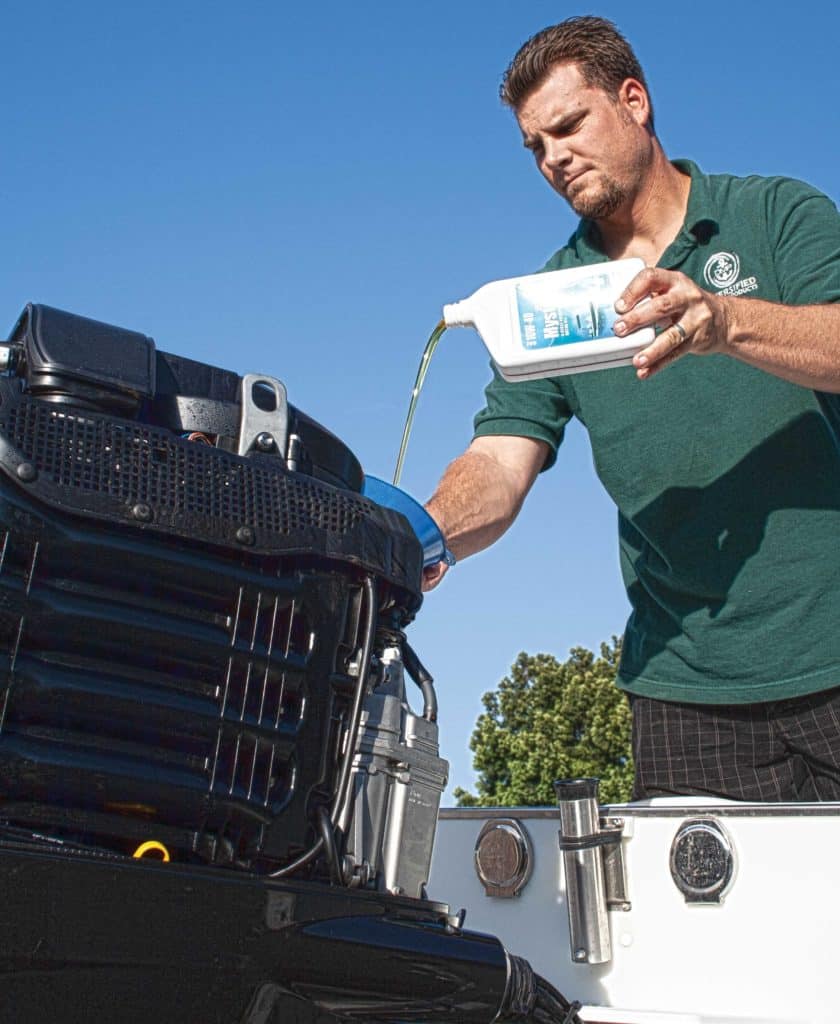
It’s also helpful to keep track of part numbers, like spark plugs, filters, O-rings, the ignition-key number, etc. Also note fuse and breaker types, and the amperage ratings for all your devices. Note the bulb type and amperage for all lights. Doing so makes it easy to buy replacements. Reserve two or three pages at the back of your notebook as a repository for this info. If your book has pockets on the covers, you can rip off the labels of parts boxes and keep them handy for reference.
But for now, let’s talk about you as a seller. Remember, a log is not only about maintenance. It should include the date when any new equipment was added. It’s a good idea to make note of the cost of parts and labor, which will help justify the price you ask for your fine vessel. And be sure to save all the owner’s manuals and receipts in a secure and well-organized place so you can pass them along to the new owner. In essence, any time you do anything to the boat, whether it be service-related, routine maintenance, parts replacement, or adding new goodies, write it down in the in the logbook. That log will be money in the bank when it comes time to sell. Here’s how to make a good one.
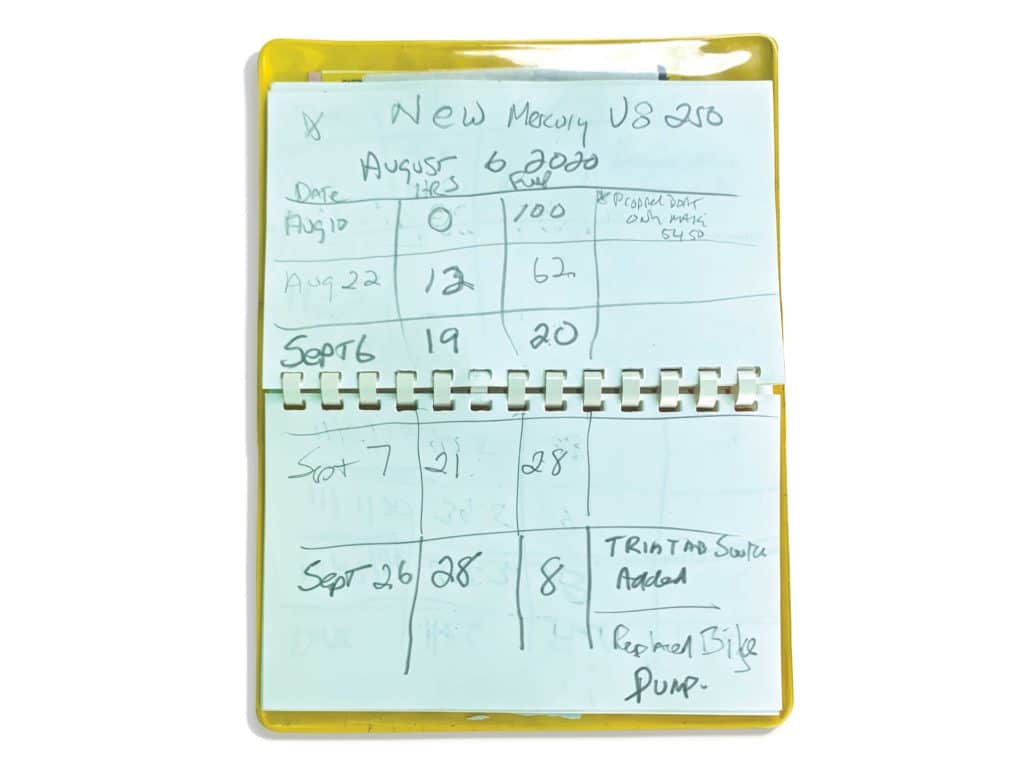
Jot These Things Down
Get Organized
A maintenance log, in my opinion, should be nothing more than lined pages on which you can make notes about everything that is done to the boat. If the log is already organized into categories for things such as engine- oil changes, filter changes, etc., it will be less inviting and more cumbersome to make notes about all the noncategorized things. There’s a ton of stuff to be written in a maintenance log, so don’t constrain yourself by having a logbook that boxes you into a limited number of categories.
Neatness Counts
Take the time to write clearly so future owners can easily read what has been written. Include part numbers and brand names. Note sources where you made purchases so future purchasers might be able to go to those same sources for parts and supplies. For some things, make note of not only the date but also the engine hours when the service was performed. If someone else did the repair or service, make note of who did it, their address and phone number.
Make a List
Make note of all boat work in your maintenance log, no matter how trivial it might seem to you, and include the date of the work and engine hours at that particular time. Your list will be extensive, but key service elements to document include new fluids, filters, belts, hoses, tanks, fuel lines, batteries, cables and pumps.
In addition, don’t forget to log the addition, replacement or service of equipment such as deck hardware, smoke and CO detectors, marine electronics, canvas, the marine sanitation system, lighting, throttle and shift cables, hydraulic systems, bottom paint and more.
Depending on your boat, there might be more categories on your list. But do yourself a favor and fill out the maintenance log as thoroughly as possible. This might seem tedious, but it’ll pay off in the end.
- More: boat maintenance , how to buy a boat , How-To , Preventative Care
More How To

On Board With: Brian Grubb
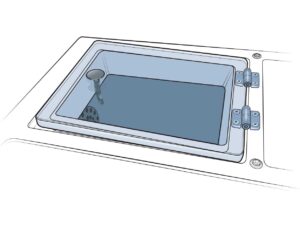
Installing Clear Acrylic Livewell Lids

Captain of Dive Boat That Caught Fire Sentenced to Four Years
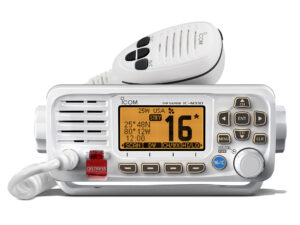
How to Make DSC Fully Functional on a VHF Radio

Boat Test: 2024 Checkmate Pulsare 2400 BRX

Cox 350 Diesel Outboard
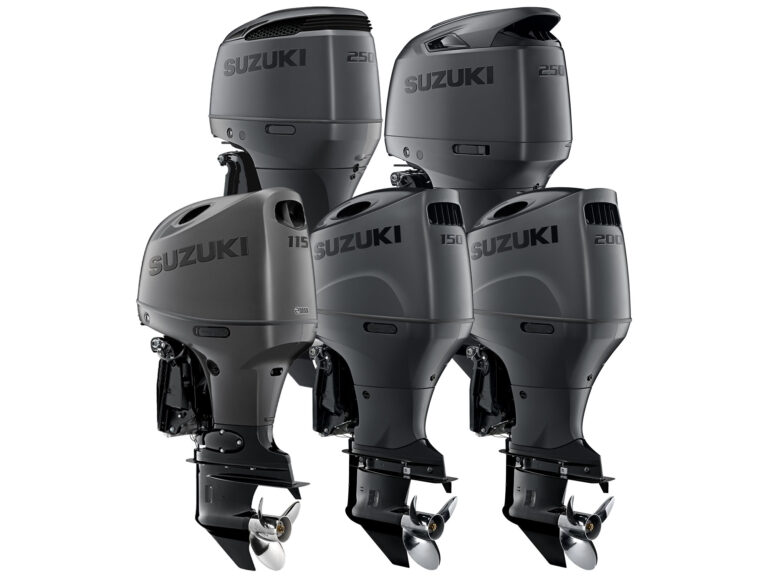
Suzuki Marine Unveils New Stealth Line Outboards

Boat Test: 2024 Zodiac Medline 7.5 GT

- Digital Edition
- Customer Service
- Privacy Policy
- Cruising World
- Sailing World
- Salt Water Sportsman
- Sport Fishing
- Wakeboarding
Many products featured on this site were editorially chosen. Boating may receive financial compensation for products purchased through this site.
Copyright © 2024 Boating Firecrown . All rights reserved. Reproduction in whole or in part without permission is prohibited.

Do you operate a yacht? Our app is perfect for you
Vessel maintenance log - what it is & how to manage it.
To avoid unexpected surprises related to your vessel, it’s no secret that maintenance should be one of your top priorities. However, maintenance is includes a lot more than your regular checks, visual inspections and hasty examinations.
Depending on the size and built of your yacht, there’s a significant number of tasks that need to be performed regularly to ensure its safety and performance.
While maintenance mainly falls upon the engineer of the vessel, their ability to perform their tasks effectively affects the whole crew. This is why keeping a vessel maintenance log is crucial if you want your routine to be efficient and precise.
In this article, we talk about the importance of a vessel maintenance log and give you a brief overview of its contents. To this end, we provide the main benefits of a vessel maintenance log and the main sections it should encompass. Finally, we look at some essential tools you can use to help you manage these tasks smoothly. UPDATE 13/10/2021: Check out the new boat maintenance log feature of Plan M8
What is a maintenance log book?
A vessel maintenance log book is a rather simple, albeit very useful document. It contains a list of all the actions that need to be taken in order to keep your boat in perfect condition.

The booklet offers a detailed overview of all of the equipment that needs to be maintained and help you track maintenance history. Additionally, it can include precise information on things like:
- materials and time needed for maintenance
- spare parts and suppliers
- the operator in charge of the maintenance of a particular piece of equipment
Note that every vessel will usually come with its own maintenance log and the concept is important yet somewhat outdated. Let’s briefly go through the importance of a maintenance log before looking into more efficient, alternative solutions.
Why is keeping a boat maintenance log important?
Beyond the obvious benefits of staying organized and up to date with your maintenance, there are some additional advantages of keeping a precise vessel maintenance log.
Save on upfront costs
Keeping a detailed vessel maintenance log will allow you to know exactly when to repair or replace old equipment. You will gather data regarding failure patterns, expenditure, and repairs. This will allow you to save up a lot of money in the long run.
For instance, let’s say you have a piece of equipment that fails regularly. The maintenance vessel log will show you the pattern of breakdowns that needs your attention. It should allow you to opt for a new piece of equipment that will be more efficient and cost-friendly. Not to mention, the added warranty that would minimize maintenance costs even further.
On the other hand, the absence of a log can also lead to a disorganised maintenance schedule and more breakdowns. In turn, your ship will be stuck in port, keeping your crew idle and wasting money instead of earning.
Finally, the repairs themselves can be quite costly. Add up the overtime for repair technicians and urgent parts deliveries and it becomes clear how keeping a vessel maintenance log becomes a money-saver.
Identify trend across equipment parts, brands, and components
Keeping a vessel maintenance log will help you clarify recurring trends related to equipment. You will be able to draw patterns across models, brands, and components.
This, in turn, allows you to highlight the best course of action when it comes to durability, repairs, availability, etc.
Adding to that, the more consistent your maintenance log records are, the more pertinent the data will be. This data will then be crucial for you to avoid any money-sinks, and to develop sustainable best-case scenarios for the equipment on board.
Increase the safety of crew members
As we mentioned previously, keeping a detailed vessel maintenance log should result in fewer breakdowns. If your equipment is always kept in perfect working condition, it reduces the risks of accidents considerably.
The log allows you to track your equipment’s health, ensuring a safer working environment for the most important resource - your crew.
- Prevent problems regarding warranty claims
Yet another benefit of carefully documenting maintenance and repairs on your vessel equipment, is that warranty claim processes become much more streamlined.
First, you can track all warranty information through a single document. Easily accessing this information is crucial to be able to think ahead.

For instance, it can be extremely troublesome when you are counting on a warranty claim for an essential piece of equipment, only to discover that its warranty has expired. Worse, this usually happens once the part has broken down, causing unexpected costs.
Moreover, keeping the exact dates and types of maintenance done on your equipment will help you easily determine your rights on warranty claims.
Track the crew’s accountability of certain pieces of equipment
Keeping a log of maintenance checks will allow for better accountability of the crew members that maintain and operate with the equipment on board.
Crew carelessness can be a major factor in equipment failure. Thankfully, the vessel maintenance log can help you detect these patterns. You can then monitor crew-members that show signs of negligence and act accordingly.

Furthermore, ensuring everyone knows that you keep these types of records will encourage the crew to be more careful with the equipment.
And finally, the operators that are in charge of maintaining the equipment are equally held accountable for their work. This should ensure that the maintenance is always done up to the standards set up by the captain .
Increase the resale value of your equipment (and vessel)
Record-keeping helps you prove that the equipment has been properly taken care of during the time it was used on the vessel.
This can have a great impact on the decision of a second-hand buyer. The records paint a clear picture of the attention the previous owner has given to a certain asset. It boosts the buyer’s confidence that the equipment is in perfect condition and that it will serve them well.
As such, equipment with maintenance records retains a much higher value than equipment with no vessel maintenance log.
Create specialized maintenance programs
The equipment on your yacht undergoes widely different various working conditions and types of usages. Your vessel maintenance log will allow you to separate your maintenance programs into routine checkups and more detailed ones.
Thanks to the log, you can cross-reference data such as part suppliers, repairmen, and technicians. You can then create specific maintenance programs for each type of equipment.
For instance, it can help you set up routine lifeboat equipment list checkups on shorter intervals and in-depth engine and hull checks for your lifeboats on a 6-month basis.
Main elements of a yacht maintenance log
Generally speaking, vessel maintenance logs have two main sections, that can contain different types of information:
General equipment information
This section contains the information needed to identify the piece of equipment that needs your attention. This includes:
- The name of the equipment.
- Type of equipment.
- Model and manufacturer.
- Serial number.
- Location on the vessel.
- Crew members responsible for the equipment.
In addition to this basic information, you can add some additional pertinent data such as:
- Date of purchase.
- Purchase price.
- Warranty duration and/or expiry date.
- Spare parts in stock.
Maintenance calendar
The second, and equally important section of your vessel maintenance log will be your maintenance calendar. In this part, you will record crucial data such as:
- The description of the maintenance.
- The scheduled maintenance date.
- Crew-members involved in the maintenance.
- Eventual external technicians, service providers, and/or part suppliers.

Boat maintenance checklist
Providing you with a complete checklist of all the tasks that need to be carried out on a vessel could be a bit of an overreach. However, this short checklist should give you a good idea of what to expect when planning your boat maintenance.
- Engine - check for corrosion, cracked hoses, leaks, etc.
- Propeller - critical for performance and fuel economy, the propeller will need a thorough check before every launch.
- Battery - must be checked frequently as it can be subject to corrosion.
- Electrical lines - deteriorating electricals can be a fire hazard. Check out this article for additional information on yachts’ electrical systems .
- Oil - staying on schedule with oil checks is a determining factor in avoiding critical engine failures.
- Other fluids - steering fluids, coolants need to be checked periodically to ensure smooth sailing.
- Hull - check frequently for cracks and blisters and avoid costly leaks.
Check out the video below for a visual representation of a boat maintenance checkup.
As you may be able to tell, maintenance is as important as it is chaotic. Organizing task history into regular notebooks and excel sheets can quickly lead to an overwhelming amount of data that can confuse both the captain and the engineer.
Aside from that, you will often have to make smaller notes and highlights about your tasks, which makes record-keeping even more complex.
Thankfully, there is a solution!
PlanM8 - boat maintenance log book software
At PlanM8 we offer the ultimate solution when it comes to your vessel maintenance and record-keeping.

Our app allows you to easily plan your maintenance schedule and easily cross-reference your equipment with suppliers. The entire process becomes simpler, reducing your running costs and the time spent on maintenance processes.
Using it is simple and intuitive - components can be added to your database and then used to create specific maintenance tasks in your calendar.

Become an early PlanM8 adopter; try the app now .
Wrapping up
In this article, we established the importance of a detailed vessel maintenance log and provided a list of major benefits of holding one, including:
- Saving you time and money.
- Identifying maintenance trends.
- Increasing safety.
- Streamlining warranty claims.
- Tracking the crew’s accountability.
- Increasing equipment resale value.
- Creating maintenance programs.
All in all, the benefits of holding a vessel maintenance log are quite compelling. Furthermore, software solutions make this previously tedious task easy to incorporate into your daily routine. So if you aren’t already keeping a maintenance logbook, there are no practical reasons to not start one immediately.

- Paddle Board

How to Keep a Sailing Captain’s Log: A Step-by-Step Guide
Sailing is an exhilarating experience that requires focus, organization, and careful planning. One of the most important tools for sailing enthusiasts is a captain’s logbook, in which they can record important details about their sailing journey. Keeping a detailed captain’s log ensures that you have an accurate record of your sailing experience. In this article, we will look at the steps required to keep a sailing captain’s log. From understanding why you need a log to how to write an entry, this guide will help you document your sailing journey like a pro.
Quick Facts
Why keep a captain’s log.
A captain’s log is an essential tool for any sailor. A logbook is designed to record important details about your journey, including weather, navigation, and crew information. However, a captain’s log serves several purposes beyond just recording information.
Importance of Accurate Record Keeping
An accurate and detailed record of your sailing journey can help you recall valuable information, such as the best routes to take, wind patterns, and the types of gear you need for future trips. It can also assist you in identifying patterns and trends in your sailing experiences . For example, if you notice that you consistently encounter rough seas in a certain area, you can adjust your route or prepare accordingly for future trips.
Additionally, keeping a captain’s log can help you track your progress as a sailor. You can see how your skills have improved over time and identify areas where you may need to improve further. This can be especially helpful if you are training for a specific sailing event or competition.
Legal Requirements and Regulations
In some areas, there may be legal requirements for sailors to keep a captain’s log. For example, if you are operating a commercial vessel or transporting passengers, you may be required to keep detailed records of the journey. It is important to check your local regulations to ensure you are in compliance.
Even if you are not required by law to keep a captain’s log, it is still a good idea to do so. In the event of an accident or emergency, a detailed log can provide valuable information to authorities and insurance companies.
Enhancing Your Sailing Experience
A captain’s log can help enhance your sailing experience by providing a detailed account of the journey. It can help you remember memorable moments, new sailing routes, and the people you sailed with. In addition, keeping a log can help you stay motivated and engaged with your sailing hobby.
One way to make your captain’s log even more meaningful is to include personal reflections and observations. For example, you could write about how the sunset looked from the deck of your boat or how the smell of the ocean air made you feel. These details can help you capture the essence of your sailing experience and create a lasting record of your journey.
Keeping a captain’s log is an important aspect of sailing. It can help you improve your skills, comply with legal requirements, and enhance your overall experience. By taking the time to record your journey, you can create a valuable resource that you can refer to for years to come.

- Wire-O (White) Full Color Cover with Front and Back TransLux
- Owners Data, Beaufort Conversion Scale, Notes Page, Two Page Spread Trip Log
- Data Pages and Fuel Log
- High Quality Wire-O Bound
- Made in USA, Proudly Produced in Ohio. Veteran-Owned.

- Columbus, Andrew (Author)
- English (Publication Language)
- 150 Pages - 09/11/2021 (Publication Date) - Independently published (Publisher)

Choosing the Right Logbook
Choosing the right logbook is an essential step in keeping a captain’s log. Not only does it keep track of important information, but it also serves as a record of your journey and experiences on the water. There are several types of logbooks to choose from, each with its unique features. Here are some key things to look for when selecting a logbook:
Types of Logbooks
Logbooks can be divided into two primary categories: paper and digital. Both types have their advantages and disadvantages. Paper logbooks are simple and easy to use, making them a popular choice for many sailors. However, they can be difficult to read and may not be as durable as digital logbooks. Digital logbooks, on the other hand, are easy to read and can be shared easily; however, they require a device to use and may not be available in all types of weather conditions.
It’s important to consider the type of sailing you’ll be doing when choosing between a paper or digital logbook. If you’re planning on doing extended offshore sailing, a paper logbook may be a better choice as it doesn’t require a power source. However, if you’re sailing in coastal waters and have access to power sources, a digital logbook may be more convenient.
Key Features to Look For
When selecting a logbook, consider the type of information you will be recording and choose a logbook that is designed to accommodate that information. Look for logbooks that have space for recording basic details such as date, time, and location, as well as weather information, navigation information, and crew and passenger information. Additionally, consider the durability of the logbook, as it will need to withstand the elements. A logbook with waterproof pages and a sturdy cover will be a good investment for any sailor.
Another important feature to consider is the size of the logbook. If you have limited storage space on your boat, a smaller logbook may be a better choice. However, if you’re planning on doing extensive sailing and need to record a lot of information, a larger logbook may be necessary.
Digital vs. Physical Logbooks
If you choose to use a digital logbook, be sure to research and test different options. Some popular logbook apps include Deckmaster, BoatLog, and Navily . These apps offer a range of features, from basic logbook recording to advanced navigation tools. However, it’s important to remember that these apps require a device to use, which may not be convenient for all sailors.
On the other hand, if you prefer a physical logbook, consider purchasing one specifically designed for sailors, such as the ASA logbook or the Rite in the Rain logbook. These logbooks are designed to withstand the elements and have space for all the necessary information. They also offer a sense of tradition and nostalgia that many sailors appreciate.
Ultimately, the choice between a paper or digital logbook comes down to personal preference and the type of sailing you’ll be doing. Regardless of which type you choose, a logbook is an essential tool for any sailor and will serve as a valuable record of your adventures on the water.

Essential Information to Record
Recording essential information accurately and diligently is critical to maintaining a useful captain’s log. Here are some of the most important things to record:
Basic Details
Basic details include the date, time of departure, and time of arrival. This information is essential for keeping track of the time spent on the journey and for calculating the distance covered. Additionally, record the name and type of vessel you are sailing on and the name of the skipper.
It is also important to note the purpose of the voyage. Are you on a pleasure cruise, a delivery trip, or an expedition? This information can help you plan your route and make necessary arrangements for the journey.
Weather and Sea Conditions
Weather and sea conditions are critical information to record, as they have a significant impact on the journey’s safety and enjoyment. Include data such as wind speed and direction, sea state, atmospheric pressure, and visibility.
It is important to note any changes in weather or sea conditions, as they can affect the vessel’s performance and the crew’s comfort. For example, if there is a sudden increase in wind speed or a change in sea state, the skipper may need to adjust the vessel’s course or speed to maintain safety.
Navigation and Position
Recording navigation and position information is essential for safety and route planning. Record information such as the course, speed, and position of the vessel and any aids to navigation used.
It is also important to note any hazards or obstacles encountered during the journey, such as reefs, rocks, or other vessels. This information can help you plan future voyages and avoid potential dangers.
Crew and Passenger Information
Record the names and roles of all crew and passengers, as well as any noteworthy experiences they have had during the journey. This information can be helpful for future reference and for assessing the suitability of future crew members.
It is also important to note any medical conditions or special needs of the crew and passengers, as well as any incidents or accidents that occur during the journey.
Maintenance and Repairs
Recording any maintenance or repair required and carried out can help you keep track of the vessel’s mechanical systems and ensure that it is in good working order.
It is also important to note any equipment or supplies that need to be replenished, such as fuel, water, or food. This information can help you plan for future voyages and ensure that the vessel is properly equipped.
By recording all of this essential information in your captain’s log, you can create a valuable record of your journey and ensure that you are prepared for future voyages.
How to Write a Captain’s Log Entry
Writing a captain’s log entry may seem daunting, but using a standard format and writing clear and concise entries can make the process much more manageable.
As the captain of a ship, you are responsible for recording important details about your journey in a captain’s log. This log serves as a historical record of your voyage and can be used for a variety of purposes, including legal documentation, maintenance and repair, and future planning.
Using a Standard Format
Using a consistent format makes it easier to read and interpret the data later. Begin each log entry with the date and time, followed by the basic details, weather and sea conditions, navigation, and position information, crew and passenger information, and maintenance and repair notes.
By following a standard format, you can ensure that your log entries are organized and easy to understand. This can be especially important in emergency situations, where quick access to information can be critical.
Writing Clear and Concise Entries
When writing entries, use clear and concise language and avoid using acronyms or technical jargon. Use bullet points or subheadings to break up the text and improve readability. Keep your entries brief but informative. Aim to record only the most essential information to avoid cluttering the entry with irrelevant or duplicative data.
Remember that the purpose of the captain’s log is to provide a clear and accurate record of the journey. By using clear and concise language, you can ensure that your log entries are easy to read and understand, even by those who are not familiar with nautical terminology.
Including Relevant Details
Include any details that are relevant to the journey, such as interesting events, observations, and wildlife sightings. Remember that the captain’s log should provide a comprehensive record of the journey, including any lessons learned, mistakes made, or changes in plans.
By including relevant details in your log entries, you can create a more complete picture of your journey. This can be especially useful for future planning or for sharing your experiences with others.

Keeping a sailing captain’s logbook is an essential part of any sailing experience. Recording information accurately and diligently ensures that you have a detailed and comprehensive record of your journey. Whether you are operating a commercial vessel or just enjoying a leisurely trip, a captain’s log can help enhance your sailing experience and serve as a valuable tool for future journeys.
Captain’s Log FAQS
How do you keep a sailboat log.
Keeping a sailboat log involves recording essential information like basic details (date, time of departure, and arrival, vessel and skipper names), weather and sea conditions, navigation and position details, crew and passenger information, and any maintenance or repairs conducted. The log entries should be clear, concise, and follow a standard format for easy understanding and future reference.
How do I customize my captain’s logbook?
Customizing your captain’s logbook can involve creating sections that fit your specific needs, such as a section for personal reflections or wildlife sightings. It also means choosing the right type of logbook (paper or digital) that suits your sailing conditions, and selecting an application or physical logbook that provides the features and flexibility you require.
Why keep a captain’s log?
Keeping a captain’s log is crucial for several reasons. It serves as an accurate record of your sailing journey, helps you track your progress as a sailor, and can assist in identifying patterns or trends. Some regions also have legal requirements necessitating sailors to keep detailed logs. In case of an accident or emergency, a detailed log can provide valuable information to authorities and insurance companies.
What should be included in a sailing log?
A sailing log should include the basic details about the journey, weather and sea conditions, navigation and position data, information about the crew and passengers, and notes on maintenance and repairs. It’s also a good idea to include any interesting events, observations, and wildlife sightings for a more complete picture of the journey.
How do you keep logs?
Keeping logs, regardless of the context, involves consistent and regular entries. Each entry should have a standard format, starting with the date and time, followed by the essential details specific to the activity. Entries should be clear, concise, and avoid technical jargon, making it easy to read and understand later.
How do you keep a logbook?
Keeping a logbook involves making regular entries about relevant events or information. Start each entry with the date and time, followed by details specific to the event or activity. Use a consistent format for easy reference and clarity, and make sure to include any notable incidents or observations. Depending on the type of logbook, entries may be handwritten or typed into a digital platform.

John is an experienced journalist and veteran boater. He heads up the content team at BoatingBeast and aims to share his many years experience of the marine world with our readers.
What to Do If Your Boat Engine Won’t Start? Common Problems & How to Fix Them
How to launch a boat by yourself: complete beginner’s guide, how to surf: complete beginner’s guide to get you started.
Comments are closed.
Type above and press Enter to search. Press Esc to cancel.
- Skip to primary navigation
- Skip to main content
- Skip to primary sidebar
- Skip to footer
Sailing Eurybia
Two Humans and a Dog sail Mexico on a Sea Maid Ketch
How to Put Together an Effective Log Book
April 10, 2015 9 Comments
You are required to keep a Ship’s Log at sea, but there are lots of ideas about what exactly is required or useful in a log book. Finding a flexible, affordable, weather resistant solution is also not easy. We’ve found some solutions that you might find helpful.
The first boat we bought had a huge leather-bound log that they had religiously kept from the day she was launched forty years earlier. It had a screw-post binder which allowed it to grow over time by adding more pages. The one trouble with that log book was that experiential anecdotes were mixed in with maintenance notes and voyaging notes – it was very difficult to find specific references. The leather also had gotten damp over the years and looked a bit worse – more charismatic – for wear.
So for Phoenix we created two screw post log books, one for maintenance and experiential anecdotes with an index on each page, and a second Ship’s log for voyaging notes. Both are screw post books and both are filled with pages that can be printed on any printer.

Ship’s Log Book

Journal / Daily Log Book

The Daily Log is a sort of Journal where we write our thoughts, memories and keep notes on what we fixed. Our passengers are also welcome to write their impressions. In order to make it easier to find notes on what we fixed or broke, there is an index along the bottom of each page with the major systems (see above) such as Instruments, Plumbing, etc. By circling the system that is discussed on that page the log is much easier to visually search later. I also leave a large outside margin for adding dates, notes etc. Daily Log – Sheets
Maintenance Log Book

The format and included fields will be different for each boat depending on its systems. And example of ours can be seen below. You can also download it and customize it for yourself. You will also need to update it when you add or replace a system. Checklist
Resources to Make Your Own Log Book
Log book pages.
Download, customize, and print these templates to make your own log books (all in Word, doc format):
Ship’s Log – Sheets | Ship’s Log – TOC | Daily Log – Sheets | Maintenance Checklist

Finding the right material for the cover of a screw post portfolio cover was a little challenging. First I tried a conventional hardback cardboard binding, but this warped in just a season or two. So I have two suggestions – the rigid Acrylic Screwpost Portfolio Cover (Vista) which is less expensive and the Aluminum Screwpost Portfolio Cover (Machina) which is very classy, indestructible, but more expensive and may scratch wood surfaces.
Get Logging
Whether you decide to use some of the resources here, or buy a log book from a chandlery, the important thing is to actually use these logs. The Ship’s Log is a bare minimum requirement for responsible seamanship. The Daily Log is wonderful to look back on and is a great memory jog for writing those facebook or blog posts when you return to the world of internet.
Share this:
- Click to share on Twitter (Opens in new window)
- Click to share on Facebook (Opens in new window)
- Click to share on WhatsApp (Opens in new window)
This site uses Akismet to reduce spam. Learn how your comment data is processed .
I NEED A FORM FOR ANCHOR LOG BOOK
I’ve never heard of an anchoring log book – what purpose is it for? What data do you want to record?
Hi Marie, I just came across your website. It is very nice and lost of great info. I did not ask the original question regarding an anchor log however, I have heard from others that it is a good practice to record some basic info about it like depth of water, method of anchoring (e.g., 1 or 2, Mediterranean Mooring, etc.). I think the idea is then this info can be used for things like planning future trips, maintenance, etc. I hope this helps.
Thanks for the useful logbook pages. It took me a little while to figure out that “init” meant the initials of the person filling in the entry. I still haven’t figured out the meaning of the “Crs” column. What’s it for?
CRS is the course! Sorry – I should have deciphered those!
That makes perfect sense – course. I’m tweaking this by adding a temperature column under conditions. I’m also changing the speed / miles to a dual data set. GPS Speed and GPS Mile and Course Speed and Course Miles. My thought is that tacking back and forth you are building up miles but might not be making many miles along your course. If the GPS / plotting software is running you are likely getting two sets of numbers that might be of interest to record. If you aren’t really going anywhere you might just want to log the distance traveled … Read more »
Great Info! One question…with your logs the pages appear to be 8.5×11 inch sheets, but the binders you point to are 11×17. What do you actually use? It appears the exact binders you linked to are discontinued…
I use 8.5×11, they may have changed their links. I’ll see if I can find the same product and fix the links. Thanks!
Ahoy! Magnificent site you have here. I am reading The Log of the Cutty Sark, and dont understand this: After giving the fix position lat/long – the course always follows, given by three elements f.i. «S. 42˚ W.» I assume S.
Stay in touch - sign up for our newsletter for occasional news from Eurybia and her crew.
Your Boat Name:
Email address:
- Privacy Policy
“Live in the sunshine, Swim the sea, Drink the wild air” --Emerson
About This Site
SailingEurybia is a WordPress site. The theme is a version of the Genesis Sample Theme developed by Eurybia-Marie . ©2018
Yachting Monthly
- Digital edition

Boat maintenance: the 55-point skipper’s checklist
- Katy Stickland
- April 27, 2021
The ultimate boat maintenance checklist to make sure your yacht is ready for launch and the start of the sailing season

Check your rudder for hairline cracks or damage
Boat maintenance: Mast & Rigging

Check all your standing rigging connections. Credit: Colin Work
- The mast cap is out of sight, out of mind 99% of the time, but serves multiple functions: backstay, forestay, cap shrouds, radio antenna, nav lights, halyard sheaves. Rotate mast and boom sheaves to check they are not misaligned or worn by a bad halyard lead. Lubricate sheaves with WD40 or silicone grease.
- Spreaders, gooseneck, mast heel, kicker, mainsheet and topping lift connections all need checking for wear, damage or corrosion.
- Check for galvanic corrosion between different metals.
- Check electrical connections, deck and spreader lights.
- Wax mast tracks and luff grooves with candle wax or Teflon spray.
- Standing rigging: Look for areas of wear or stranding on the wire. Check mast tangs, T-ball joints and rigging screws.
- Wash furling drum and swivel and check they move freely. It’s common for the top swivels to become stiff and sometimes seize, which can compromise the forestay wire.
- Running rigging: check for chafe and that the shackles aren’t seized. Sheets, halyards, warps: wash in fresh water to get rid of salt and grime.
- Deck winches : strip down, wash parts in paraffin, wash off with soapy water and lightly regrease .
- Windlass : if manual, check it’s working, clean and tighten. For powered versions check foot switch for water, clean and use Vaseline on the connections.
- Anchor chain : Re-mark lengths if faded, or add chain markers. Check for condition and wear.
Head, bilge & gas

Check bilge pumps it might sound ok but is it actually attached to a hose?
- Check impeller on bilge pumps and grease with water pump grease only (Vaseline will rot impellers)
- If you have an automatic bilge pump, check float switches work.
- Dry bilges thoroughly then if water appears after relaunch you’ll know you’ve got a leak.
- Fill water tank and add purifier such as Puriclean or Milton
- If the pump on the heads is stiff look to service and lubricate with silicon grease.
- If you have a gas sensor, check it works.
Boat maintenance: Below waterline
Hull and skin fittings.

Check jubilee clips for rust. Credit: Bob Aylott
- Most vessels have DZR (dezincification-resistant brass) seacocks. Look for any signs of corrosion on the skin and tail joints, which are common points of failure.
- Ensure all valves are greased.
- All hoses should be double-clipped. Check jubilee clips for rust . Do you have wooden plugs attached in case of emergency?
- Check skin fittings are free of blockages/ growth or antifouling.
- Check anodes have plenty of life . Don’t forget prop shaft and saildrive anodes.
- Check leading, trailing and lower sections for damage or hairline cracks.
- Check for play in bearings, stock or quadrant. Movement should be minimal. Grease steering cable.
- Check for stress cracks or movement internally and externally – especially at the keel root and around the internal framing or matrix, and around fastenings and backing washers.
Prop shaft & stern gland
- To check bearings, grasp prop in both hands and try moving it up and down and from side to side. There should be little, if any, movement – no more than 2mm.
- Check P-bracket for stress cracking from misalignment or damage.
- Stern gland packing. Many yachts have some form of deep-seal arrangement that has a service life of around seven years. Those that have a proper stuffing gland will need to be greased to prevent drying out and getting brittle. The gland may need pulling down or repacking at some point.
- If you have a saildrive, check the condition of the seal and the metal ring that holds it in position. Again, note the seals have a life expectancy of between five and seven years depending on manufacture.
Boat maintenance: Mechanics
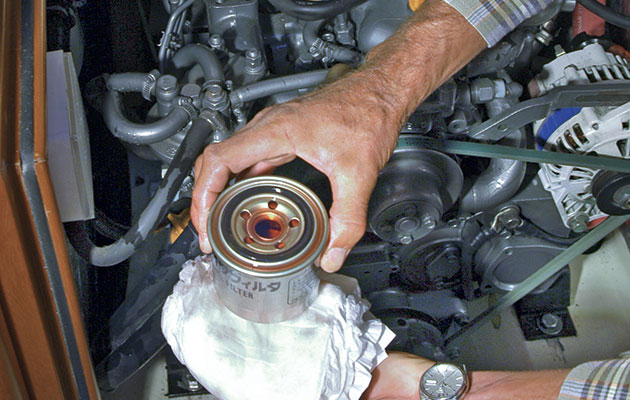
Check all filters
- If you didn’t change the oil when you laid up, change it now.
- Change fuel filters.
- Remove rags stuffed in outlet pipes from winterisation.
- Impellers – if removed at lay-up – reinstall with a smear of water pump grease.
- Reinstall the engine belts and check tension: there should be no more than half an inch of play.
- Check oil levels. Check durability of the gaiter seal. Check rubber faring and reseal if necessary.
- Change internal engine anode.
- Check engine mount is secure.
- Check diesel tank for water from condensation . Drain off or replace fuel. Add an appropriate biocide to help kill off diesel bug .
- Check inaccessible wiring, such as bonding wires from the anode and earthing wires from the starter motor. Clean the terminals and smear them with Vaseline or silicone gel.
Batteries and electrical systems
- Check electrolyte level if yours is an open lead acid battery; tighten battery securing straps and make sure vent for gases is clear. Clean terminals and coat with Vaseline. For sealed batteries, check the condition of indicator light, or other charge indicator.
- Switch on instruments and use backlighting to help reduce any condensation.
- If the anode looks serviceable for another season, check bonding and wires. If they haven’t worn at all they may not be working so check Ohm resistance max 0.2 from propeller to anode.
- Check for chafe, wayward stitching and tears. Do you carry a sail repair kit?
- Take to a sailmaker if the sacrificial strips is worn out.

Make sure your navigation apps are up to date
- Update charts from Notice to Mariners .
- For electronic charts, check with your supplier how to update. New chartplotters can connect to WiFi, or you may need to connect the chart chip to your PC at home and download the update.
- Download operating software updates for your chartplotter and instruments.
- Make sure your subscriptions for navigation apps on phone and tablets are up to date with the latest charts.
- Check age of hoses. If they are over five years old, they should be replaced. Check for kinking or wear in gas hosepipes. If in doubt, replace.
- Check hose clips are tight. Hoses behind cookers should be armoured.
- Check thermal cut outs on hob, grill and oven work.
Harness/lifelines
- Check stitching and get repairs done by a sailmaker if necessary.
- Jackstay and Danbuoy lines: check condition and points of security.
- If you have the traditional type, check the bulb, battery and that it actually works. The new types have various ways of testing, and all have an expiry date.
Lifejackets

Is your lifejacket fit for purpose and in good condition? Credit: Theo Stocker
- Inflate using mouth tube. Leave inflated overnight to check for leaks .
- Wash with fresh water
- Weigh cylinder and check lights if fitted.
Stanchions/lifelines
- Check stanchions and make sure lifelines are still suitably secured at each end and cords and pins are in good order.
- Watch out for wire failing if you have plastic sheathing.
- Make sure these are in date, in a watertight container and are easy to reach. It’s worth having gloves and goggles to hand too.
- Make sure these are in date and registered with the correct contact details.
- Ensure this and the hydrostastic release are within the service date, and you are aware of its contents .
- If its secured with a rope, consider if you could release it in an emergency with ease.
- Make a grab bag up with essentials
Enjoyed reading Boat maintenance: the 55-point skipper’s checklist?
A subscription to Yachting Monthly magazine costs around 40% less than the cover price .
Print and digital editions are available through Magazines Direct – where you can also find the latest deals .
YM is packed with information to help you get the most from your time on the water.
- Take your seamanship to the next level with tips, advice and skills from our experts
- Impartial in-depth reviews of the latest yachts and equipment
- Cruising guides to help you reach those dream destinations
Follow us on Facebook , Twitter and Instagram.

Boat maintenance log
by Simon Jollands | Boat Maintenance , Preparation , Yacht ownership

Keeping a boat maintenance log is an ideal way of reminding owners what needs to be done to a boat and when. Read on for some tips, advice and a sample maintenance log.
However keen you may be to work on your boat, organising yourself can be challenging on occasions. Planning routine boat maintenance in advance can really help you in the long term.
Getting organised
If you are thinking of doing the bulk of the work yourself then it is advisable to be realistic about how much work needs to be done and approximately how long it is going to take. The winter weather can often put a spanner in the works so you may need to build in some flexibility. For those fortunate enough to have friends or family who are happy to give you a hand, the sooner you can firm up dates in diaries for doing this work the better. Remember to give them plenty of advance warning, preferably when the sun is still shining.
Even if you are not going to do the routine maintenance work yourself due to the pressure of work, physical impediment, or because you can afford not to, then you still need to do some planning well ahead of time. This means speaking to your boatyard early on and explaining what tasks need to be done and when. It is a little foolhardy just to take the boat ashore at the end of the season and then three months later ask the yard to do all the maintenance just before you plan to go afloat in the spring. Not a good plan.
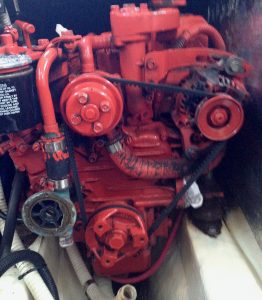
Doing the work yourself
Begin by checking through the boat’s maintenance history, noting when work was done in previous years, how much it cost and estimating how long each task took.
Make a list of the materials and tools you will need for each task coming up and remember to keep a note of what you spent on materials and where you bought them. With boating, it always pays to shop around to get the best price for parts.
While your local chandlery might be your favourite shop in the world to browse in, if you are after non-specialist products, such as sponges, brushes, paint rollers, thinners, solvents and tape, you will most likely find similar items in large hardware stores at a fraction of the price. Also, if you are really organised, then buy enough materials to last for a whole season and you will save yourself both time and money in the long run.
Maintenance log spreadsheets
There are some excellent downloadable boat maintenance log spreadsheets available and one in particular I would recommend is produced by Viki Moore of Astrolabe Sailing see www.astrolabesailing.com . Viki’s spreadsheet collates all kinds of information which is boating related including maintenance, boat details, spare parts, annual budget, personal inventory, passage log and more.
Viki’s boat maintenance worksheet is designed to work as a reminder of work to be done as well as a record of what has been done in the past. There are columns to add the parts required, their part number, measurements and other details to make life easier when you need to place orders and plan the work.
Below are some extracts taken from Viki’s maintenance log that gives an overview plan of the routine maintenance that needs to be carried out annually on a typical mid-size cruising yacht.
Should you decide not to keep a computer based maintenance log, it would still be a good idea to make a plan of what routine maintenance needs to be done through the year, noting the jobs that can be done only when the boat is hauled out. We hope the checklists above will help you get started.

[fts_facebook type=page id=820902544629856 access_token=EAAP9hArvboQBAMMusRb1XctIwYq9fUcSZCVNDQAMjkZCiqAIMiZBkawPJZB3VkeSsH6gCIDfIZAslzZBRAEXYdesg0fu11YIst1FXtABBwdULjOsYFGUYqNujLSxRIWxKAcqm7bb9dmAgzJDZCVhkRj6r9useCQqJr4wJnxkBv909ySYxqj7hYl posts=4 height=650px description=no posts_displayed=page_only]
Recent Posts
- Navigating narrow channels
- DIY boat upgrades: Budget-friendly projects to enhance your (older!) boat
- Boat Security: Protecting your vessel from theft & vandalism
- Learning about diesel engine maintenance
- 2023 Rolex Fastnet Race – Part 3
Boat Reviews
- Boats Specs
- Marine Pros
- Boat Insurance
- Boat Warranties
- Boat Transport
- Boat Towing
- Marine Forecasts

Your Ultimate Boating Resource

The Top 9 Reasons to Maintain a Meticulous Boat Log
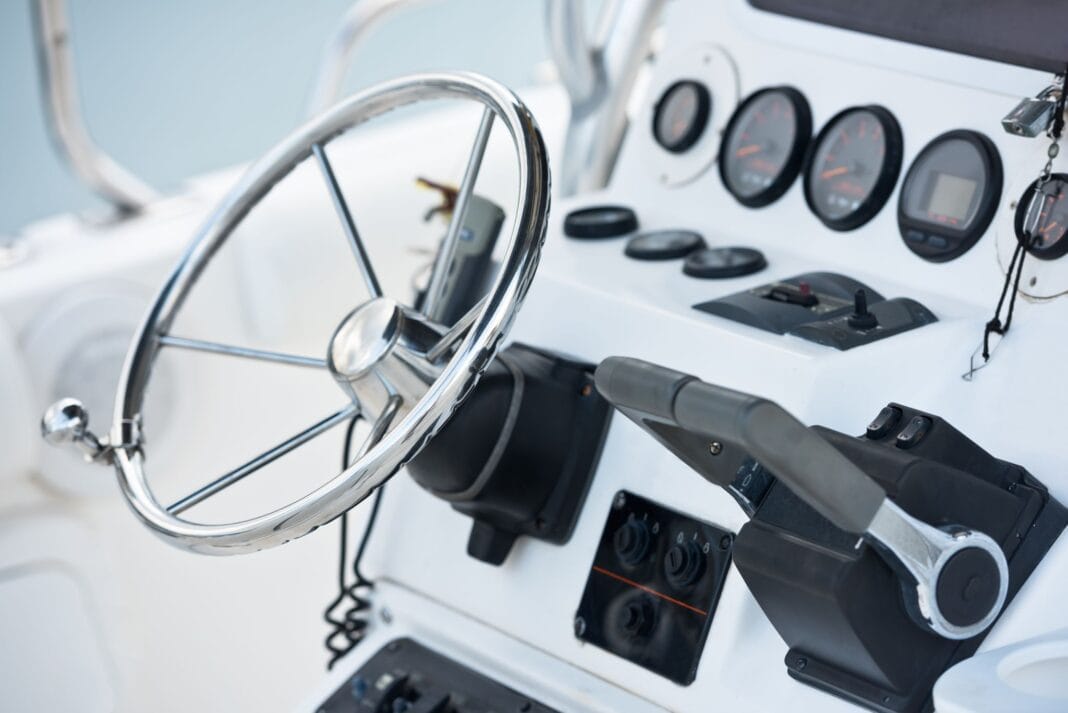
As you glide through the crystal clear waters, wind in your hair and sun on your face, it’s easy to imagine the bliss of owning a boat. However, with great ownership comes great responsibility.
Diligent maintenance is crucial for smooth sailing. That’s why keeping a boat maintenance log, with dates, tasks performed, and any issues found, is essential. Whether you prefer a digital spreadsheet, a specialized app, or a trusty logbook, it’s important to regularly update it for maximum effectiveness.
Let’s dive into the top reasons why every responsible boat owner should keep one.
1. Stay Organized and Documented
Say goodbye to scattered records and hello to a centralized log of all maintenance activities. With everything neatly documented, tracking and recording tasks becomes a breeze, helping you stay ahead of regular maintenance schedules.
2. Never Miss a Maintenance Reminder
Don’t risk overlooking vital maintenance tasks like engine checks, oil changes, and hull inspections. Set up reminders in your log and take a proactive approach to upkeep, preventing potential issues down the line.
3. Boost Your Boat’s Resale Value
When it comes time to sell your beloved boat, a well-documented maintenance history can significantly increase its value. Prospective buyers will appreciate the care and dedication shown in maintaining your vessel, making it an attractive investment for them.
4. Tackling Troubles with Finesse
When unexpected malfunctions arise, a maintenance log becomes an invaluable tool for troubleshooting. By analyzing past entries, you can pinpoint recurring issues, identify potential causes, and provide crucial information to marine professionals for swift and precise repairs.
5. Unleash Peak Performance
Consistent maintenance leads to optimal performance of your boat. A detailed log allows you to track the efficiency of various components over time, empowering you to make informed decisions about upgrades or replacements when needed.
6. Keep Your Budget Afloat
With a record of maintenance expenses in hand, you can easily manage your boat-related costs. This enables better budget planning for future maintenance tasks or upgrades, eliminating any financial surprises along the way.
7. Safety Above All Else
Safety is paramount on the water, and a maintenance log ensures that all critical safety checks are conducted regularly. From life jacket inspections to navigation light functionality and emergency equipment reviews, this log guarantees a secure boating experience for you and your passengers.
8. Protect Your Investment
Your boat is more than just a vessel, it’s an investment. By diligently maintaining and documenting your boat’s service intervals, you not only keep your warranty valid, but also guarantee its peak performance for years to come.
9. Sail with Confidence
There’s nothing quite like the peace of mind that comes with knowing your boat is in top shape. With a detailed maintenance log, you can rest easy and fully enjoy your time on the water, without any worries or unexpected hiccups.
Final Thoughts
To ensure smooth sailing and maximize your boating experience, one practice stands above the rest: keeping a boat maintenance log. The mere act of documenting may seem insignificant, but its impact is far-reaching.
From increasing efficiency to prolonging the life of your vessel, the benefits are undeniably worth it. So don’t hesitate–grab that logbook and start recording today! Your boat and future self will be grateful for your diligence.
RELATED ARTICLES
2024 pursuit os 445: an overview, dock your boat smoothly this summer with these tips, the billionaire’s playground: where to spot superyachts around the world, summertime snack ideas for your boating adventure, de-winterize your boat the right way with these professional tips, latest posts, don't miss, our newsletter.
Get the latest boating tips, fishing resources and featured products in your email from BoatingWorld.com!
What type of wood is used for pier pilings?
What is the difference between a dock and a floating pier, what is the proper technique for pulling a beginner wakeboarder, what does ‘no wake’ mean on a lake, what is the difference between wash and wake, 10 essential tips for fishing near private property, the benefits of using a drift sock: guidance for anglers, lure fishing: secrets for imitating live bait and attracting fish, explore the untapped depths of america’s best bass fishing spots, tackle your catch-and-release adventures with these 6 tips, outboard motor maintenance: tips for keeping your engine in top shape, the essential boat tool kit: tools every boater needs, diy boat building: 8 tips and tricks for building your own vessel, the art of miniature maritime craftsmanship: ship in a bottle, antifouling paints: a guide to keeping your boat shipshape, beginner’s guide to standup paddle boarding: tips and techniques, boating for fitness: how to stay active on the water, kayak safety: how to stay safe on the water, anchoring in a kayak or canoe: how to secure your small boat, 2024 aquila 47 molokai review, 2024 sea-doo switch 13 sport review, 2024 aspen c120 review, 2024 yamaha 222xd review, 2024 sailfish 316 dc review, 2023 seavee 340z review, 2023 centurion fi23 review, gear reviews, megabass oneten max lbo jerkbait review, fortress anchors fx-7 anchoring system review, fortress anchors fx-11 anchoring system review, fortress anchors commando anchor kit review, fortress anchors aluminum anchors review, stay in touch.
To be updated with all the latest news, offers and special announcements.
- Privacy Policy

Service Locator
- Angler Endorsement
- Boat Towing Coverage
- Mechanical Breakdown
- Insurance Requirements in Mexico
- Agreed Hull Value
- Actual Cash Value
- Liability Only
- Insurance Payment Options
- Claims Information
- Towing Service Agreement
- Membership Plans
- Boat Show Tickets
- BoatUS Boats For Sale
- Membership Payment Options
- Consumer Affairs
- Boat Documentation Requirements
- Installation Instructions
- Shipping & Handling Information
- Contact Boat Lettering
- End User Agreement
- Frequently Asked Questions
- Vessel Documentation
- BoatUS Foundation
- Government Affairs
- Powercruisers
- Buying & Selling Advice
- Maintenance
- Tow Vehicles
- Make & Create
- Makeovers & Refitting
- Accessories
- Electronics
- Skills, Tips, Tools
- Spring Preparation
- Winterization
- Boaters’ Rights
- Environment & Clean Water
- Boat Safety
- Navigational Hazards
- Personal Safety
- Batteries & Onboard Power
- Motors, Engines, Propulsion
- Best Day on the Water
- Books & Movies
- Communication & Etiquette
- Contests & Sweepstakes
- Colleges & Tech Schools
- Food, Drink, Entertainment
- New To Boating
- Travel & Destinations
- Watersports
- Anchors & Anchoring
- Boat Handling
- ← How-To DIY
Boat And Trailer Maintenance Checklist
Advertisement
Take care of the boat, trailer, and engine and the chances of a problem occurring on the water or the road will be minimized. Here's what you need to know.
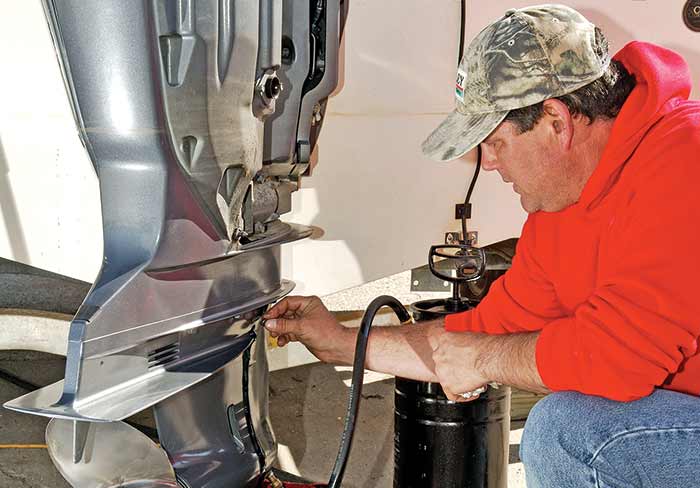
Whether you do it yourself or leave it to the pros, routine maintenance is essential to keep your rig in tip-top shape.
So you're a new boat owner. Your pristine center-console sits proudly in your driveway, the outboard shining brightly in the sun, and even the trailer is sleek and polished. How can you keep it at least close to looking and performing as it does now? Maintenance is the key.
But if you're not mechanically inclined, how can you properly care for your new rig? If you're all thumbs, budget in some bucks for dealer maintenance. In this case, it's probably best for both you and your boat if you leave the mechanical details to the pros. You can, however, perform all the tasks that don't require technical expertise. Such tasks as keeping fittings and moving parts lubricated, cleaning and waxing the finish, checking the drive lubricant and engine oil, making sure that fishing line isn't wrapped around the prop shaft — these are all examples of simple skills a responsible boater should learn, especially to protect his or her investment. While boats have never been cheap, they seem to be more expensive than ever when compared to the average paycheck, so it's smart ownership to make sure that all is up to snuff.
To help you out, we've created a simple Timeline and Maintenance Chart, one that works for DIYers and tech-savvy boaters alike. Refer to the chart to check maintenance items before every outing and at every 20, 50, and 100 hours of use. Seasonal boaters should consult the chart before every layup. With our chart as your guide, your rig will stay like new for longer and command top price at resale or trade-in time, particularly if you keep records of what you've done and when. The chart is the suggested schedule, although some boats may require more frequent checks. If in doubt always follow the manufacturer's recommendations for your particular boat, engine, and trailer.
Click on checkmarks in the chart below to watch our how-to videos.
Download a copy of the checklist above.
Related Articles
The truth about ceramic coatings for boats.
Our editor investigates the marketing claims of consumer-grade ceramic coatings.
Fine-Tune Your Side Scan Fishfinder
Take your side-scanning fishfinder off auto mode, and you’ll be spotting your prey from afar in no time
DIY Boat Foam Decking
Closed-cell foam flooring helps make boating more comfortable. Here’s how to install it on your vessel
Click to explore related articles
Contributor, BoatUS Magazine
John Tiger is a freelance boating writer and frequent contributor to many magazines.
BoatUS Magazine Is A Benefit Of BoatUS Membership
Membership Benefits Include:
Subscription to the print version of BoatUS Magazine
4% back on purchases from West Marine stores or online at WestMarine.com
Discounts on fuel, transient slips, repairs and more at over 1,200 businesses
Deals on cruises, charters, car rentals, hotel stays and more…
All for only $25/year!
We use cookies to enhance your visit to our website and to improve your experience. By continuing to use our website, you’re agreeing to our cookie policy.

Please verify you are a human
Access to this page has been denied because we believe you are using automation tools to browse the website.
This may happen as a result of the following:
- Javascript is disabled or blocked by an extension (ad blockers for example)
- Your browser does not support cookies
Please make sure that Javascript and cookies are enabled on your browser and that you are not blocking them from loading.
Reference ID: 6d7dfefe-1653-11ef-b2c4-aaf8cadb1f67
Powered by PerimeterX , Inc.
Your boating life, in one app.
All your marine life, fully catalogued, organized and backed-up, accessible from anywhere on any device, online as well as offline.

Available on
Less time to worry, more time to sail. enjoy yourself.
Clear your mind of the boat chores by putting all of them in TheBoatApp and be in control!
See how it works.

A sea of features
With logbook, inventory, documents, checklists, tasks and alerts over cloud services, TheBoatApp, powered by TheBoatDB, is all about having the best experience in managing your boat efficiently and effectively
Search & Explore
Compare & benchmark.
Boat comparison & benchmarking made easy! Benchmark your boat versus the “competition” or simply compare side-by-side. Spot differences easily among many boats and benchmark performance ratios!
Save Benchmarks
No advertising.
You may not be fond of ads but they help pay the bills. Advertising will be removed throughout the platform when you subscribe to Gold.
' '
GB per boat
Your data need space to grow! Go ahead and store your documents, log-records, photos, manuals, etc. Your marine life in a single repository!
Custom fields
Custom categories
Custom locations
Google Maps
Your route and trips are overlaid in Google Maps.
Let us see how the weather looks, and the winds are blowing, around your location of course!
Support priority
We strive to support you, but we have to prioritize the Gold users that support us.
Feature requests priority
Contribute actively into shaping the features roadmap. If we have not already implemented to it, propose your favourite feature!
Platform support
Operating such a massive online platform 24/7, along with pairing Android and iOS apps, is far from an easy task. Gold pays for servers and other costs.
Checklists from TheBoatApp community. Proven workflows to get things right!
A wide variety of checklists, available for you to pick and use out of the box! You like one, simply follow it and always have the latest version. You want to customize one, simply copy it and edit away to your liking!
Things to do and check on boarding yacht, before leaving mooring.

A list of reccomended to have tools and accessories in your boat toolbox!

To-Do list for checking your boat and gear prior to going cruising!

A list of items to have in your Survival Kit (...and hope to never have to use them!)

A list of Sea and Sail Movies, TV Series and Documentaries.

Try Pro FREE for 90 days
No payment card required.
FREE Forever
Well…, it’s free! Really, no payment needed, ever!
€19 per licence, billed yearly
All Free features and yet some more,
€49 per licence, billed yearly
All Essentials features PLUS more,
€99 per licence, billed yearly
All Plus features and much more for PROs,
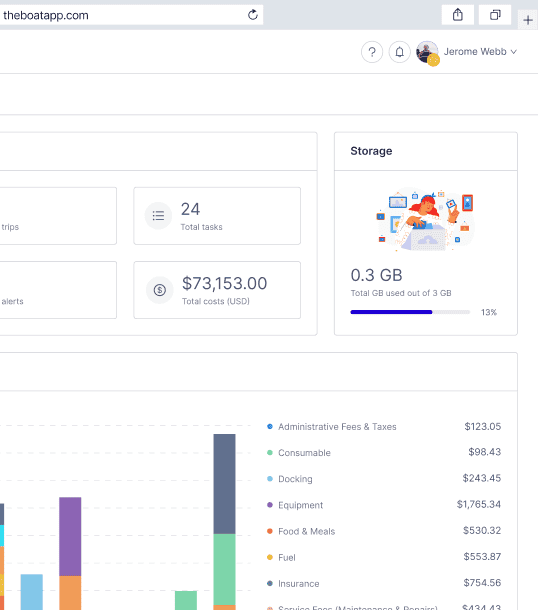
One all-seeing app for all your marine data!
A place for everything and everything in its place, resulting in safety onboard, peace-of-mind to cruise, and a higher overall & reselling value!
Join our community
Fellow mariners and platform enthusiasts live here! Join in to make questions, exchange views and ideas about existing and future features, and much more!

IMAGES
VIDEO
COMMENTS
Change the oil and filter of the engine. Clean the thru-hull. Clean the siphon break. Fill up coolant and antifreeze if needed. Check pump, impeller, and raw water strainer. Finally, let's see the annual maintenance of your sailboat's engine: Test the batteries. Check the diesel tank for damages.
And that care and attention won't help if it isn't comprehensive. That's why we've put together this ultimate sailboat maintenance checklist to help keep your ship in top condition: Inspect the boat. Survey the bilge, for example. Test the bilge pump and make sure it runs smoothly. Visually inspect the hull. Look for leaks.
As an owner, a maintenance log is a great aid in caring for your boat. Noting the dates of regularly scheduled maintenance items, such as filter changes, and oil and other fluid changes, makes it easier to care for your boat, its engines and its systems. Additionally, unscheduled maintenance, such as battery swaps, sacrificial-anode ...
UPDATE 13/10/2021: Check out the new boat maintenance log feature of Plan M8. What is a maintenance log book? A vessel maintenance log book is a rather simple, albeit very useful document. It contains a list of all the actions that need to be taken in order to keep your boat in perfect condition. ...
Captains Log Book: Boat log book daily journal entry for trips, boat maintenance and notes for sailing and ships. Columbus, Andrew (Author) English (Publication Language) 150 Pages - 09/11/2021 (Publication Date) - Independently published (Publisher) $7.99.
The Ship's Log is a bare minimum requirement for responsible seamanship. The Daily Log is wonderful to look back on and is a great memory jog for writing those facebook or blog posts when you return to the world of internet. Connect a Laptop to HF Radio. Coastal Explorer: Navigation Software for PC. 4.
The Maintenance Log includes ample space to list vessel specifications, spare part numbers, repairs, and maintenance, as well as space for reference drawings. This boat maintenance log also includes quick reference pages on safety, weather, BIA certification requirements, and more. The Maintenance Log has an attractive, embossed cover made of ...
Tips For Keeping A Great Log. The captain is responsible for the logbook and for ensuring its proper use. Unless otherwise designated, only the captain should make log entries. Entries by authorized persons must not be amended or deleted unless directed by the captain. Make routine entries every hour on the hour.
Check oil levels. Check durability of the gaiter seal. Check rubber faring and reseal if necessary. Change internal engine anode. Check engine mount is secure. Check diesel tank for water from condensation. Drain off or replace fuel. Add an appropriate biocide to help kill off diesel bug.
Keeping a boat maintenance log is an ideal way of reminding owners what needs to be done to a boat and when. Read on for some tips, advice and a sample maintenance log. However keen you may be to work on your boat, organising yourself can be challenging on occasions. Planning routine boat maintenance in advance can really help you in the long term.
Spreadsheets. Here is a collection of tools I use to manage my boat. Master Log.xls. Captains log to keep track of sea time towards the captain's license. Maintenance log of work completed. Recurring maintenance schedule. Radio log. Templates of the electronic logs to be printed out. I keep these hard copies as an easier way to write notes as ...
That's why keeping a boat maintenance log, with dates, tasks performed, and any issues found, is essential. Whether you prefer a digital spreadsheet, a specialized app, or a trusty logbook, it's important to regularly update it for maximum effectiveness. Let's dive into the top reasons why every responsible boat owner should keep one. 1.
Look no further than this boat maintenance log! This convenient logbook is designed to make recording key information about your vessel's maintenance easy and efficient, with a larger font size and comfortable spacing that minimizes effort and maximizes your time on the water.
The Boat Galley Ship's Log: 5 Logs in 1 Book - Watch Log, Cruising Log, Fluid Changes & Fills, Maintenance, Repairs & Upgrades Plus Vessel and Spares Inventory 4.6 out of 5 stars 237 1 offer from $41.34
Refer to the chart to check maintenance items before every outing and at every 20, 50, and 100 hours of use. Seasonal boaters should consult the chart before every layup. With our chart as your guide, your rig will stay like new for longer and command top price at resale or trade-in time, particularly if you keep records of what you've done and ...
Description. Everything you need to keep track of routine maintenance. Log in all of your boat's equipment, purchase dates, serial numbers, idiosyncrasies and servicing in the sufficient space provided in this maintenance log. Provides an easy way to track maintenance history and repair records in a single source. Key Features.
BOAT MAINTENANCE LOG BOOK (Comprehensive Boat Repair Book, Sailboat Maintenance Book, Logbook To Record Routine Maintenance Tasks, Work Log, Fuel Log, Spare Parts List, Suppliers' Contacts and Repair Shop Contacts). Keeping track of all the maintenance that a boat needs to be taken to be in good shape is a tremendous job. This log book has put in place a comprehensive list of log sheets for ...
As useful for skippers of powerboats as those of sail, the Boat Log & Record is a complete resource to keep track of everything boat owners need to know about their boats and their maintenance. In its large 184 pages, it is actually many books in one (you can choose and use your own categories): A pleasure boat log, including GPS waypoints, time, speed, distance, and nav notes; boat expenses ...
Boat maintenance is critical to any successful voyage, and thankfully, there are digital apps that can help boat owners and operators manage and organize maintenance tasks. A boat/yacht maintenance app includes scheduling, automated reminders, customizable checklists, and real-time maintenance tracking. To get started, users can input a list of ...
Membership Includes all these features: Easy to Follow Dashboard. Track Warranty Information. Predefined Schedules for Select Equipment. Online Maintenance & Fuel Log. Automatic Email Alerts and Reminders. Easy to Read, Well-Organized Reports. Upload Documents or Photos for Record Keeping (1 GB of space) Track up to 3 Vehicles (RV, Car, Boats ...
Boat Maintenance Log Book: track and record boat's fuel consumption, expenses, checklist for boat maintenance , boat repair work, review the boat's checklist before leaving. by ILYRIYS Book. Paperback. $549. FREE delivery Thu, Feb 8 on $35 of items shipped by Amazon. Or fastest delivery Mon, Feb 5.
Fellow mariners and platform enthusiasts live here! Join in to make questions, exchange views and ideas about existing and future features, and much more! The Ultimate Boat/Yacht Management and Maintenance APP. Intuitive Interface providing separate modules, once for each needed function. Discover all the Modules.
Boat Log Book for Captains to Record their Motor Boating or Sailing Adventures: Capture140 Individual Cruise Trips in this Journal, Plus Bonus Logs for Tracking Maintenance, Fuel & Fishing. by Ken Mihara. 18. Paperback. $799. FREE delivery Tue, May 21 on $35 of items shipped by Amazon. Or fastest delivery Thu, May 16.